The Tank is Dead! Long Live the Tank!
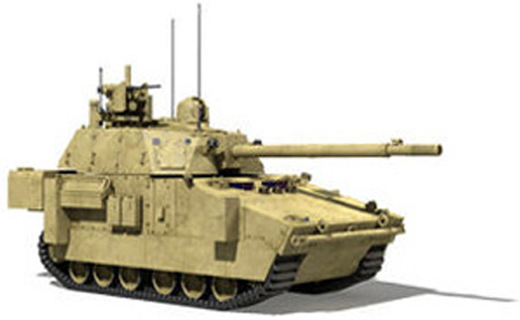
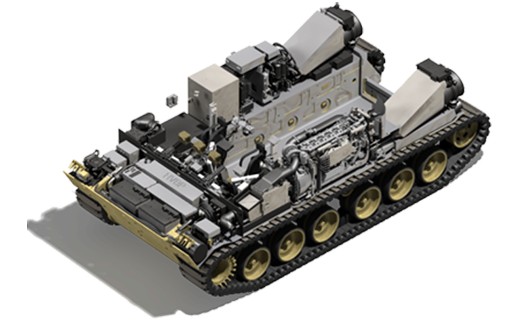
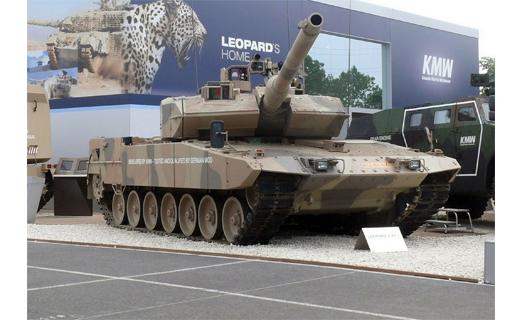
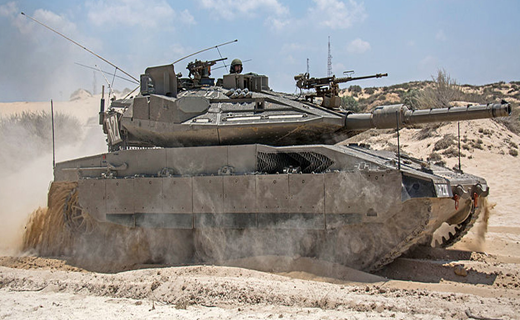
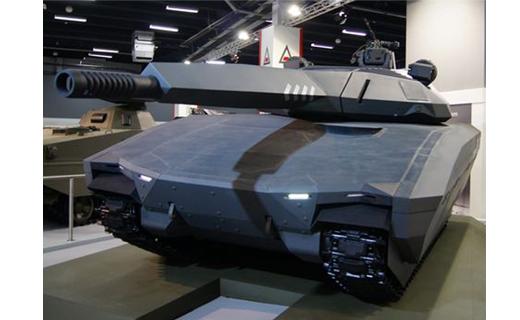
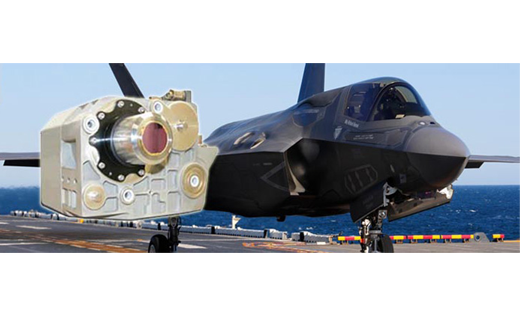
(Editor’s note: Amid increasing tensions over the situation in Ukraine, the Russian state media announced it would debut a new main battle tank and infantry fighting vehicle (IFV) during the Victory Day Parade May 9, 2015. These vehicles, the first types in a new family of Russian armored fighting vehicles (AFVs) known collectively as Armata, are intended to replace most of the Russian armored fleet by 2030. The following article describes one possible American response to this development and the generally increasing lethality of today’s modern battlefield. For more information, see http://nationalinterest.org/feature/the-russian-armys-secret-weapon-enter-the-armata-program-11711. This story links to original Russian announcements.)
Predicting the demise of the tank as a principal weapon of land warfare is one of the longest-running pastimes in the study of military history and defense affairs. Before the guns had gone silent on the fields of Cambria, the site of history’s first major tank offensive, the German army had taken its successful blunting of the British attack to mean that the tank was a battlefield novelty of little importance.1 The combination of high-explosive anti-tank (HEAT) warheads and the compact guidance systems in the anti-tank guided missile (ATGM), first deployed in numbers during the Yom Kippur War of 1973, was also supposed to have spelled the end of the tank.2
With the end of the Cold War and the “end of history,” the demise of the tank was again foretold. This era was supposed to mark the end of conventional conflicts, with the tank increasingly relegated to minor and secondary roles, since airpower and Special Forces were to take the lead in brushfire wars the world over. And yet, in each instance, the tank’s unique combination of mobility, firepower and survivability ensured that the tank not only avoided consignment to the trashbin of history, but remains one of the principle expressions of land combat power in the modern age.
The Allied tank offensives of 1918 helped ensure victory against the Central Powers.3 The development of advanced composite armors in response to the ATGM threat by British and American engineers under codenames such as “Chobham” and “Burlington” would make tanks like Abrams and Challenger some of the brightest stars of Operation Desert Storm.4 Even in today’s conflicts against non-state actors and state proxies, tanks have repeatedly proven their worth by providing a high degree of tactical overmatch to the armies that employ them.5
Looking forward, the Soldier of tomorrow is likely to face an increasingly complex and lethal environment. Advanced weapons that were once the exclusive reserve of the world’s leading militaries are now finding their way into the hands of second- and third-rate militaries, as well as non-state paramilitary organizations. Recent Israeli operations in the Palestinian territories, such as Pillar of Fire and Protective Edge, have demonstrated that highly sophisticated ATGMs and other precision-guided munitions (PGMs) are becoming increasingly common and are presenting issues once primarily dealt with by the foes of Western militaries.6
In light of this, the author believes that the demand for survivable firepower like that found in tanks will be increasing rather than decreasing in demand. Furthermore, to provide that survivable firepower, the Army should pursue more aggressive modernization of the Abrams than is currently planned, as well as beginning development of a new vehicle that leverages mature as well as developing technologies and design concepts. Only in this way will the Armor Corps remain at the forefront of tank design because, as this article will show, the most exciting developments in AFV technology are often foreign.
Assessing past development
To remain relevant and capable of contributing to the Army and the joint team’s combat effectiveness, America’s tank fleet must adapt to the changing threat environment. While the M1A2 System Enhancement Program is a world-class tank, the underlying vehicle was commissioned during the Nixon administration and the Abrams is quite nearly at the limits of its growth potential.7 This situation is remarkably similar to the one faced by the Armor Corps in the mid-1970s. The U.S. Army then sought to leap ahead in tank design to make up for a development holiday during the Vietnam War and the combined threat of a new generation of Soviet tanks and increasingly effective ATGMs. At that time, the Army sought to capitalize on research conducted as part of the failed MBT-70 and XM-803 tank development projects.8 By incorporating mature technologies from the two cancelled programs into the A3 version of the M-60 and pushing forward with 55 critical technology enhancements in the new M-1, the Armor Corps achieved a quantum leap forward in capability while establishing the technical foundations for the dominance the M1 has thus far enjoyed.9
Now the Army is faced with more than a decade’s worth of ground-vehicle research represented by the now-defunct Future Combat Systems (FCS) manned ground vehicle (MGV) and ground combat vehicle (GCV) programs with no fielded systems to show for it. Also, ground-vehicle design has continued to progress in other countries, leading to fielded vehicles with proven features that could be included in future American projects.10
To deal with this state of affairs, the author proposes that the current Engineering Change Proposal 1B (ECP1B)11 being drafted for the Abrams be expanded to incorporate proven and mature technologies not currently slated for inclusion to increase the ECP1B’s utility while a new-build tank is pursued for deployment in the mid-2020s. This new tank should represent a modest improvement in combat capabilities over the M1A3 but with particular attention paid to design modularity, built-in growth potential and the ability to incorporate new technologies as they become available. This dual-track strategy would provide increased performance to the warfighter at the soonest possible date while also positioning the Armor Corps to take advantage of cutting-edge and breakthrough technologies as they become available.
While the recent edition of Military Review contains an article by Dr. Alec Wahlman and retired COL Brian M. Drinkwine that deals with some of the possible upgrades to the Abrams, this article looks to handle the finer technical details of possible upgrades as well as review foreign developments in tank design.
Mobility
To keep the discussion of proposed features of the M1A3 and a new vehicle somewhat organized, we will group these topics into the three broad categories that define the primary attributes of a tank: mobility, survivability and lethality. In all these domains, the Abrams remains at or near the top when compared to foreign vehicles. While tanks like the Leopard II or Leclerc may be quicker owing to their lower weights, the Abrams’ 1,500-horsepower (1,118.5 kilowatts) makes it one of the world’s most maneuverable tanks. The advanced Chobham composite armor and depleted uranium mesh that comprise the Abrams’ current armor package provide a level of survivability rivaled only by the British Challenger II with its own advanced composite armor. With regard to lethality, the pairing of the M256 120mm smoothbore cannon and the M829 family of Armor-Piercing Fin-Stabilized Discarding Sabot (APFSDS) is one of the most effective pairings of gun and ammunition in the history of armored warfare. Despite all this, the fact remains that ground-vehicle technology has continued to progress and that the Abrams could stand to gain considerably from leveraging these advances.
Turning first to the M1A3, significant increases in capability across all three domains are already planned by General Dynamics Land Systems (GDLS) through ECP1B.12 Dealing first with mobility, GDLS has proposed several improvements. Chief among these is the Abrams dieselization initiative. The MTU-833 CRI diesel engine, similar to the engine found in the Leopard II, will replace the 1,500-horsepower Honeywell AGT1500C turbine engine. While providing the same power as the gas turbine, the diesel engine will deliver a 50-percent increase in cruising range through enhanced fuel efficiency and a 37 percent reduction in maintenance costs owing to greater simplicity and higher commonality with commercial diesel engines.13
Another mobility improvement, also courtesy of the Leopard II, is the Dehil 570 P-series track and road wheels, which last 20 percent longer than the current generation of track while also reducing the vehicle’s acoustic signature.14 In-arm pneumatic-suspension units replace the torsion-bar suspension and complete the planned mobility enhancements.15 Enhancing reliability, the M1A3 will also include suite of on-board diagnostics that increase the speed and accuracy of maintenance.16 When taken together, the mobility enhancements proposed by GDLS represent a significant improvement to the status quo.
Also, if slightly elevated design risk is deemed acceptable, two technologies researched for the FCS MGV program stand consideration as mobility enhancements as well. The FCS MGVs were to be powered by diesel-electric hybrid engines that provided huge improvements in fuel efficiency as well as improved electric-power-generation potential.17
Segmented band track, a continuous rubber track with metal inserts, is another technology originally developed for the FCS that would enhance the M1A3’s mobility through a reduced roll resistance, reduced acoustic signature, reduced weight and longer lifespan when compared to conventional metal tracks.18
Survivability
Turning to survivability, GDLS is proposing to include unspecified sensors providing 360-degree situational awareness and an active protection system (APS) on the next iteration of the Abrams tank.19 While both of these would represent first-of-their-kind systems on American ground vehicles, they have already been fielded and, in some cases, are battle-proven with foreign armies.
A case in point would be the Trophy APS developed by Rafael. This system consists of a series of millimeter-wave radar sensors that create a hemispherical area of coverage around the protected vehicle. After detecting an incoming threat, such as a rocket-propelled grenade, the system launches an explosive countermeasure to intercept the round before it impacts the vehicle. These systems have been combat-proven with the Israeli army, which took a brigade’s worth of the equipment to Operation Protective Edge to protect the Merkava IV tanks. The system also calculates the point of origin of the incoming round and provides the ability to slew the main gun to that point.20
Another mature technology ready for inclusion in ECP1B is the SSP-1 OBRA-3 Laser Warning System by Polish Defence Holdings. This system detects laser radiation commonly used in range-finding equipment and alerts the crew to the location of the laser rangefinder. Four sensors mounted on the vehicle provide 360-degree coverage and the same slew-to-cue capability found in the Trophy APS.21 Both systems are also capable of autopopulating battlefield-management software with the point of origin for each detected incoming threat.
By allowing the M1A3 to perceive the threat before it can engage, avoid being hit if engaged and shorten the time it takes to acquire the threat, systems like Trophy and SSP-1 provide a significant improvement over the Abrams’ already impressive survivability while requiring little to no more development prior to integration, since these systems are both designed as plug-and-play after-market additions to mature vehicle designs. This is, in fact, a major source of the marketability stressed by the manufacturers and could be leveraged for rapid fielding to the current fleet of Abrams tanks.
Lethality
Moving to lethality, GDLS is looking to integrate an ammunition datalink that would allow use of the projected advanced multi-purpose (AMP) 120mm round.22 Seeking to improve the Abrams’ target-acquisition capability, ECP1B may also include a third-generation forward-looking infrared (FLIR) sensor suite.23 While replacing four existing rounds, the AMP round does not provide an increase in lethality so much as take the guesswork out of what round should be battle-carried.24
An increase in lethality could be achieved through integrating technologies already found on foreign vehicles. The M256 120mm smoothbore cannon that currently equips all M1 tanks in service is a license-built copy of the Rheinmetall L44 120mm, referring to the fact that the length of the gun is 44 times its 120mm bore.25 Leopard IIA6 and all subsequent versions mount the Rheinmetall L55 120mm gun.26 The additional 25 percent in barrel length imparts a higher muzzle velocity and accuracy to rounds fired from the gun. As demonstrated in the inclusion of the L55 on the Leopard IIA6, the high degree of commonality with the L44 makes integration of the longer gun relatively simple.27
A further increase requiring minimal development would be the certification of Israeli Aerospace Industries’ Lahat ATGM for use in the Abrams. The Lahat ATGM can be launched from a variety of platforms, including from the main gun of tanks with 105mm and 120mm guns.28 By extension, the Abrams’ M256 should be compatible with the Lahat ATGM. The round’s range of 4.97 miles (eight kilometers) from ground platforms would significantly enhance the Abrams’ reach, which – even when equipped with an L55 type gun firing conventional munitions – would be about 2.5 miles (four kilometers).29 This increased reach would close the gap that exists between the Abrams’ maximum engagement range and the 3.1 mile (five kilometers) range of tanks like the T-80 and T-90 when equipped with the AT-11 Sniper ATGM.30 To maximize the potential of the standoff range provided by Lahat, ECP1B should also seek to leverage the manned-unmanned teaming capabilities being developed as part of the AH-64E Block III program.31 The ability to manipulate unmanned aerial vehicles would permit the Abrams to use remote systems for target designation and use Lahat to achieve a true beyond-line-of-sight engagement capability.
New-build vehicle
All the upgrades described previously would significantly enhance the Abrams tank’s performance. The fact remains, though, that the vehicle will be approaching 40 years in service by the time these upgrades could come to fruition. A new-build vehicle is a requirement. If the need for this vehicle is clear, the features and capabilities are not as concrete. Still, the trends discussed previously should give a good sense of where the new vehicle needs to go in terms of development, what threats it should be able to address and what capabilities it should have.
Given a typical developmental timeline, requirements drawn up today must seek to discern the environment in which a given system will operate years in the future. While doing this with any accuracy is difficult, the trends of the present hold a light to the way of the future. As discussed earlier, recent and ongoing conflicts in the Middle East demonstrate that even future conflicts with non-state actors will bring our Soldiers and armored vehicles into contact with advanced ATGMs, other PGMs and the sensors that go with these weapon systems. The diffusion of weapons and technologies once exclusively held by Western militaries will define the battlefields of tomorrow. To counter this, a future tank must seek to exploit the asymmetrical technological advantages of American and allied militaries: advanced lethality solutions, sensors and sensor fusion, and network solutions.
As the pace of both technological change and the evolution of the threat environment increase, the ability of a platform to adapt over time must be a conscious design attribute. Modularity and excess space, weight and power must be built into the design.
Turning first to mobility, a new-build vehicle should take full advantage of the research in hybrid drive trains conducted for the FCS and GCV programs. A vehicle equipped with such an engine, and the band track discussed earlier, would benefit from much improved fuel efficiency and acceleration, as well as from generating plenty of excess electrical power. Also, when running on electric power, the new tank would be able to virtually eliminate its acoustic signature and thereby open up new maneuver possibilities and increase its own survivability.
Reducing signature
Moving to survivability, a future American tank must embrace a concept of layered defense because the enemy cannot engage what it does not see, cannot damage what it cannot hit and cannot kill what it cannot penetrate. To ensure the enemy cannot see the tank of the future, signatures of all types must be reduced when compared to the current generation of vehicles.
The current state-of-the-art in cross-spectrum signature reduction for ground vehicles is the Polish PL-01 concept tank. The vehicle’s visual signature is diminished by reducing the standard four-man crew to three by replacing the loader with a mechanical autoloader and moving all crew members into the hull. The resulting unmanned turret has a very low profile and the reduced space required by the crew limits the vehicle’s protected volume, reducing its weight and size overall.32
The PL-01’s radar signature is reduced by applying radar-absorbent material to the vehicle’s skin and shaping its surfaces to minimize the probability of a surface being perpendicular to a radar receiver.33 The infrared (IR) signature reduction is perhaps the most intriguing part of the whole vehicle. A matrix of hexagonal plates on the vehicle’s skin can change its temperature to match that of the environment on the vehicle’s opposite side, giving it the ability to disappear from view in an IR sensor.34 The vehicle may even call forward a false IR signature from an on-board library, allowing the 35-ton tank to take on the appearance of a passenger car or anything else it might choose to imitate.35 More IR signature reductions are achieved by active cooling of the PL-01’s exhaust.36
The hybrid diesel engine and band track discussed earlier would serve to reduce a future American tank’s acoustic signature. Having made the new-build vehicle harder to see, the work of making it harder to hit will also rely on a cross-spectrum approach. Laser warning systems would warn the new tank that a threat has begun an engagement sequence. Millimeter-wave radars installed on the vehicle as part of an active defense system would alert the vehicle to the presence of an incoming round. If the vehicle was unable to evade the detected threat, the APS would engage the incoming round and prevent the vehicle from being hit. If all these countermeasures were defeated, it would fall to the new tank’s passive armor to defeat the incoming rounds.
Modular armor
A modular-armor concept built around the idea of tailorable levels of protection should be the basis for the future tank’s passive protection. Modular armor is widely applied to European armored vehicles. The PL-01 makes extensive use of modular-armor modules, as does the Leopard II.
The modular-armor design provides a number of important benefits:
- First, the level of protection the vehicle carries is no longer fixed, as is the case with the Abrams. The Abrams tank must carry the incredibly heavy armor that shields it from APFSDS and HEAT rounds even on patrols where the most serious threat it will face are small arms. Modular armor allows the vehicle crew to tailor the level of protection to the threat level, carrying the appropriate level of protection and not more.
- Second, modular armor allows for rapid replacement of damaged modules.
- Finally, modular armor allows a vehicle’s armor to upgrade as material technology advances without a major redesign of the vehicle or costly retrofits.
Cannon
Third, and perhaps most importantly, we turn to the lethality of the proposed new-build vehicle. While the Abrams has been equipped with the M256 120mm smooth-bore cannon since the 1980s, the survivability of its targets has increased greatly. The T-90, the most advanced tank fielded by Russia and other states, combines composite armors and Kontakt-5 explosive reactive armor to achieve a protective power equivalent to 4.4 feet (1.34 meters) of solid steel.37 When the effects of APSs are factored in, the current weapon systems suite in the Abrams seems barely adequate. A future tank will likely be fielded initially with a version of the M256, but a potential for a more lethal weapon must be built into the turret of the new vehicle.
Shortly before the end of the Cold War, American and West German tank designers projected that future Soviet tanks would be immune to the 120mm and began design work on 140mm cannons.38 The 140mm cannons were intended to provide muzzle energies of roughly 18MJ, or twice that of the 120mm cannons deployed on Abrams and Leopard II.39 A gun of this size will make an autoloader a near necessity and will require a larger breach block and larger recoil space, all of which will impact turret design before a 140mm gun is even ready for fielding.
Another option for increasing the hitting power of main-gun projectiles is the pursuit of electro thermal-chemical propellant ignition. These guns achieve higher muzzle energies by igniting propellant through a plasma cartridge that is catalyzed by electrical impulses.40 This method of ignition greatly increases the consistency and effectiveness of the propellant ignition and delivers huge improvements in performance.41 A U.S. Army study conducted in the late 1990s with a prototype 120mm electro thermal-chemical gun designated the XM-291 achieved muzzle energies of 17MJ, or just below those achieved with the larger 140mm prototypes.42 A future tank capable of fielding a gun with such energy would be assured of defeating the protective systems of all fielded armored vehicles and any projected vehicles the author is familiar with.
Sensors
As always, though, the key to maximizing the potential of these weapons lies in the ability to perceive a threat. Third-generation FLIR is being considered for inclusion in Abrams’ ECP1B, a development that will ensure the full use of advanced munitions currently being researched. Millimeter-wave radars in APSs as well as laser-warning systems (LWSs) provide a level of 360-degree awareness to select foreign ground vehicles today and could be incorporated into M1A3, as discussed earlier. To enhance this level of 360-degree situational awareness for the new-build vehicle, the future tank should include systems similar to the AN/AAQ-37 Distributed Aperture System (DAS) fielded on the F-35 Joint Strike Fighter (JSF). This system – six sensors embedded in the skin of the aircraft – provides the JSF 360-degree IR search and track as well as missile-launch detection. This information is fused into a single picture and is superimposed onto a helmet-mounted display that permits the pilot to see through the skin of the aircraft as if it were glass.43
While the ground environment the future tank will inhabit is more cluttered than the one inhabited by the JSF, sensors like the DAS, combined with sensor fusion, would permit the tank to shed its traditional lack of situational awareness imposed by its armored skin. Sensor fusion would permit the seamless integration of information from IR, daytime television, LWS, millimeter-wave radar and other sensors into a single picture of the operating environment. Leveraging the network in conjunction with these sensors would permit the future tank to achieve a level of situational awareness and, therefore, lethality that Abrams crews can only imagine. While some people might consider all this superfluous and unneeded, consider that American tank crews who witnessed the transition from M1A1 to M1A2 have already witnessed the potential of sensors to increase their lethality.
The Commander’s Independent Thermal Viewer (CITV), mounted on the M1A2’s turret, permits the commander to search for targets while his gunner executes an engagement cycle. The Force XXI Battle Command Brigade and Below allows the commander to instantly share information from his CITV with other networked vehicles. A future tank that is enabled by a suite of sensors providing 360-degree stare across the electromagnetic spectrum will only accelerate the increase in lethality realized by previous Abrams upgrades.
Tank is dead
This article has covered a lot of ground in discussing the future of armored firepower for the U.S. Army. The various topics from the changing threat environment to advances in ground vehicle protective systems, to historical parallels in defense acquisitions, could each justify books in their own right. And of course, this author would be remiss if he did not acknowledge the often-decisive role of tank-crew training and its ability to magnify or overcome materiel superiority. For the sake of looking at the future’s broad outlines and what capabilities a future American tank must encompass, some developments such as directed-energy weapons were not mentioned. Some cutting-edge vehicles, like the South Korean K2 or Japanese Type 10, were also passed over. This is not to say that these ideas and vehicles do not represent important advances in the state of the art or that some of their features should not be included in a future American tank.
The existence of so many vehicles with whole sets of capabilities currently absent on American ground vehicles confirms two things. First, the tank as we know it is dead. Second, the tank as a means of delivering survivable firepower to the decisive point on an increasingly complex and lethal battlefield has a bright future enabled by ideas and technologies unimaginable a few short years ago. The tank is dead! Long live the tank!
Notes
1 Heinz Guderian, Achtung Panzer! New York: Cassel Military Classics, 1937.
2 Spencer C. Tucker, The Encyclopedia of Middle East Wars, Santa Barbara, CA: ABC-CLIO, LLC, 2010.
3 Guderian.
4 Thomas Houlahan, Gulf War: The Complete History, Schrenker Military Publishing, 1999.
5 American examples include heavy use of the Abrams tank in battles such as the Second Battle of Fallujah and the Battle of Marjah. Canada’s experience with its Leopard IIs in Helmand Province led to debates in the Canadian Parliament to reverse an earlier decision to liquidate Canada’s tank fleet by 2020.
6 Live Leak, “Merkava 4M with Trophy Destroys Kornet Missile Before It Hits,”2014. To this, one could easily add the cases of Hamas using Kornet ATGMs in Lebanon in 2006 and of the Islamic State in Iraq and Syria making using of the Kornet and similar missiles in the Syrian Civil War and in its invasion of Iraq.
7 Daniel Wasserbly, “AUSA 2014: Army Outlines Upcoming Combat Vehicle Choices,” IHS Jane’s 360, Oct. 14, 2014, http://www.janes.com/article/44473/ausa-2014-army-outlines-upcoming-combat-vehicle-choices (accessed Oct. 18, 2014).
8 COL David C. Trybula, “’Big Five’ Lessons for Today and Tomorrow,” PhD thesis, Alexandria, VA: Institute for Defense Analyses, 2012.
9 Ibid.
10 The modular armor packages commonly employed on European AFVs as well as with sensors and APSs that are combat-proven with foreign militaries come to mind. Developments in these areas are discussed in this article.
11 Wasserbly.
112 GDLS, “Abrams Modernization,” http://www.gdls.com/index.php/products/modernization/abrams (accessed Oct. 19, 2014).
13 Ibid.
14 Ibid.
15 Ibid.
16Ibid; Wasserbly.
17 Todd Lopez, “Future Combat Vehicles to be Hybrid Electric,” Army News Service Website, Feb. 28, 2008, http://www.army.mil/article/7653/future-combat-vehicles-to-be-hybrid-electric/ (accessed Oct. 18, 2014).
18 Greg Grant, “U.S. Army Chooses Molded Rubber Track for FCS,” Sept. 12, 2009. Improved steel/rubber and band-tracks make tracked vehicles superior to wheeled armored cars in all categories, http://www.combatreform.org/bandtracks.htm (accessed Oct. 18, 2014).
19 GDLS.
20 Kris Osborn, “DRS and Rafael Propose New Tank [APS] to Army,” DoD Buzz, Oct. 15, 2014, http://www.dodbuzz.com/2014/10/15/drs-and-rafael-propose-new-tank-active-protection-system-to-army/ (accessed Oct. 18, 2014).
21 Polish Defence Holding, SSP-1 OBRA-3, 2009, http://www.pho.pl/cms/att/sprzetuslugi/177_pco_obra_en.pdf (accessed Oct. 18, 2014). The author, having encountered this system mounted on the Rosomak IFV during Steadfast Jazz 2013, will attest that the system works as advertised and greatly complicates engaging the vehicle.
22 GDLS; John D. Fuller, “Army Developing New 120mm AMP Tank Round,” Army News Service Website, March 19, 2013, http://www.army.mil/article/98946/Army_developing_new_120mm_AMP_tank_round/ (accessed Oct. 19, 2014).
23 Wasserbly.
24 Fuller.
25 The Armor Site, “Kampfpanzer Leopard II,” Nov. 24, 2010, http://id3486.securedata.net/fprado/armorsite/leo2.htm (accessed Oct. 19, 2014).
26 Ibid.
27 Ibid.
28 Defense Update, “Lahat Laser Guided Missile,” April 3, 2006, http://www.defense-update.com/directory/lahat.htm (accessed Oct. 19, 2014).
29 The Armor Site.
30 Defense Industry Daily, “India Moves to Boost Anti-Tank Capabilities,” April 6, 2014, https://www.defenseindustrydaily.com/india-moves-to-boost-anti-tank-capabilities-07587/#more-7587 (accessed Oct. 19, 2014).
31 Defense Industry Daily, “AH-64E Apache Block III: Guardians of the Battlefield,” Oct. 16, 2014, https://www.defenseindustrydaily.com/apache-block-iii-program-kicks-off-as-contract-signed-02480/ (accessed Oct. 19, 2014).
32 Military.com video center, “The Invisible Tank PL-01 Unveiled,” March 27, 2014, http://www.military.com/video/combat-vehicles/combat-tanks/the-invisible-pl-01-tank-unveiled/3396693039001/ (accessed Oct. 19, 2014).
33 Ibid.
34Tyler Rogoway, “Is Poland’s Stealthy PL-01 the Tank of the Future?” Foxtrot Alpha, March 29, 2014, http://foxtrotalpha.jalopnik.com/is-polands-stealthy-pl-01-the-tank-of-the-future-1554395391 (accessed Oct. 19, 2014).
35 Ibid.
36 Ibid.
37 The Armor Site, “T-90s Main Battle Tank,” April 13, 2014, http://id3486.securedata.net/fprado/armorsite/T-90S.htm (accessed Oct. 19, 2014).
38 Ibid.
39 Ibid.
40 P. Diamond, Electro Thermal Chemical Gun Technology Study, Technical Report, McLean, VA: MITRE Corporation, 1999.
41 Ibid.
42 Ibid.
43 Northrop Grumman, “AN/AAQ-37 [DAS] for the F-35,” 2014, http://www.northropgrumman.com/Capabilities/ANAAQ37F35/Pages/default.aspx (accessed Oct. 19, 2014).
 email
email print
print